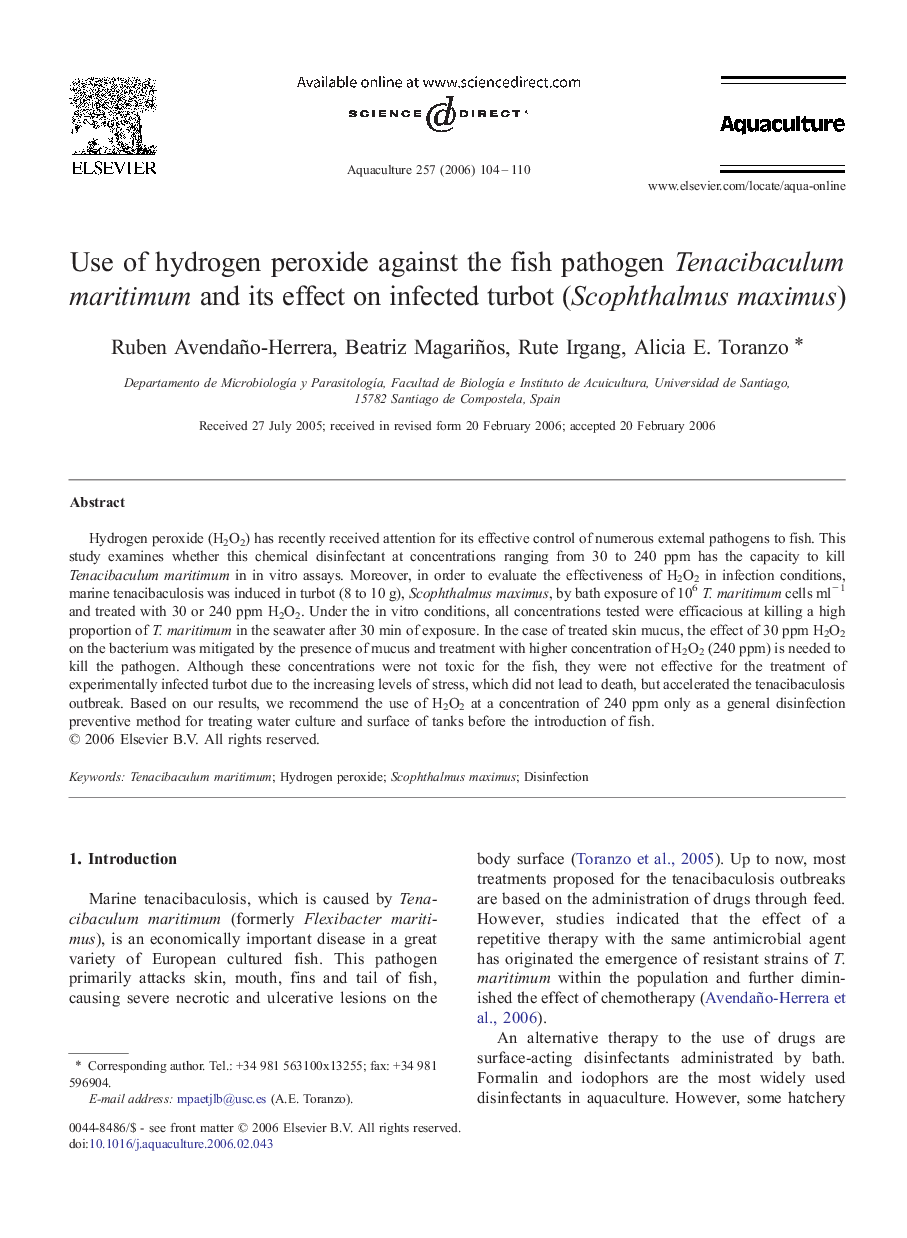| Article ID | Journal | Published Year | Pages | File Type |
|---|---|---|---|---|
| 8496769 | Aquaculture | 2006 | 7 Pages |
Abstract
Hydrogen peroxide (H2O2) has recently received attention for its effective control of numerous external pathogens to fish. This study examines whether this chemical disinfectant at concentrations ranging from 30 to 240 ppm has the capacity to kill Tenacibaculum maritimum in in vitro assays. Moreover, in order to evaluate the effectiveness of H2O2 in infection conditions, marine tenacibaculosis was induced in turbot (8 to 10 g), Scophthalmus maximus, by bath exposure of 106T. maritimum cells mlâ 1 and treated with 30 or 240 ppm H2O2. Under the in vitro conditions, all concentrations tested were efficacious at killing a high proportion of T. maritimum in the seawater after 30 min of exposure. In the case of treated skin mucus, the effect of 30 ppm H2O2 on the bacterium was mitigated by the presence of mucus and treatment with higher concentration of H2O2 (240 ppm) is needed to kill the pathogen. Although these concentrations were not toxic for the fish, they were not effective for the treatment of experimentally infected turbot due to the increasing levels of stress, which did not lead to death, but accelerated the tenacibaculosis outbreak. Based on our results, we recommend the use of H2O2 at a concentration of 240 ppm only as a general disinfection preventive method for treating water culture and surface of tanks before the introduction of fish.
Related Topics
Life Sciences
Agricultural and Biological Sciences
Aquatic Science
Authors
Ruben Avendaño-Herrera, Beatriz Magariños, Rute Irgang, Alicia E. Toranzo,
